Now we are beginning to wind down the SUSS Tresviso expedition and talks of derigging trips becoming more imminent, I have taken some time away from camp to write this post.
The expedition has been a wonderful experience so far, with some exciting finds, challenging caving, and an unbeatable backdrop for it all to take place.
Myself and Molly arrive a little earlier than the rest of the group, just in time to catch a talk in Tresviso on the history of LUSS? explorations here in the 70?s. We were lucky enough to meet some of the early LUSS explorers here, John, Nick, and Caroline. The talk was part of a celebration of all things Tresviso, the culture and history, with food, music, dancing (a few more SUSS arrived in time for this) and Bolles, a Cantabrian bowling type of game which we enjoyed losing spectacularly. We partied long into the night in the style only a remote mountain village can offer.
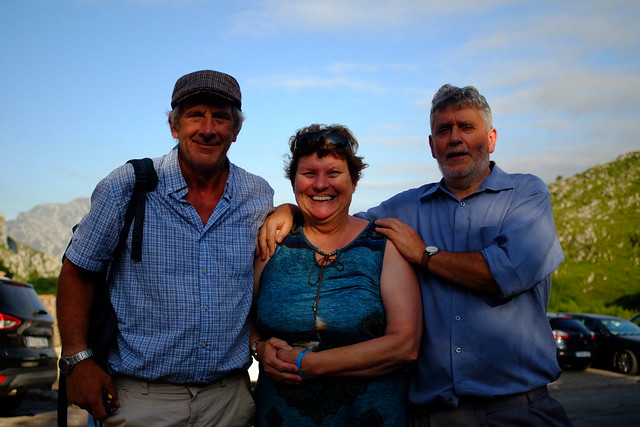 DSCF1856
DSCF1856 by
tommypmoore, on Flickr
With camp set up the next day after a long walk up the hill with heavy bags, most of the group in place and now raring to go, we relaxed under the stars, with some of us lucky to catch a single incredible shooting star. The landscape and isolation from the city makes for some spectacular scenery 24 hours a day, unless the fog comes in ? which it frequently does!
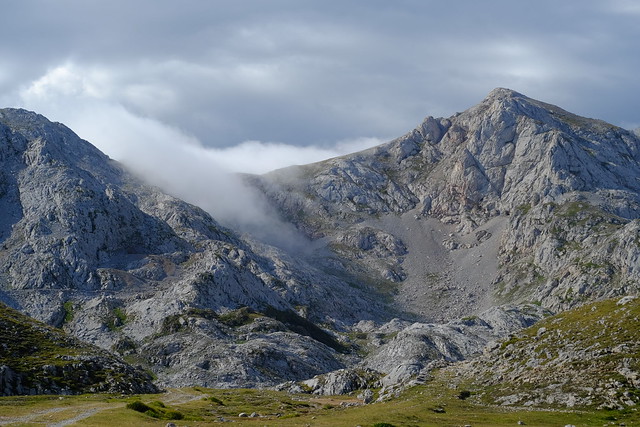 DSCF1875
DSCF1875 by
tommypmoore, on Flickr
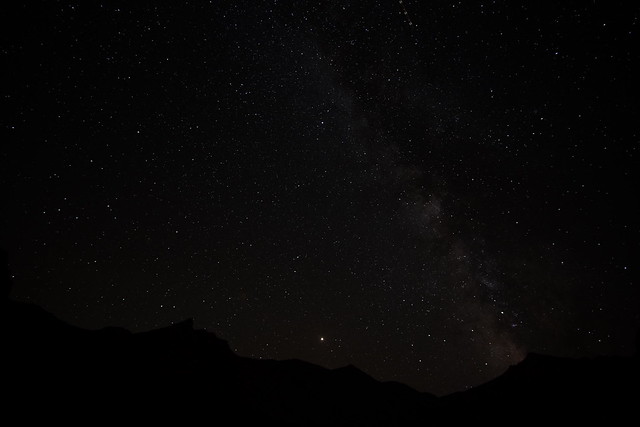 DSCF1909
DSCF1909 by
tommypmoore, on Flickr
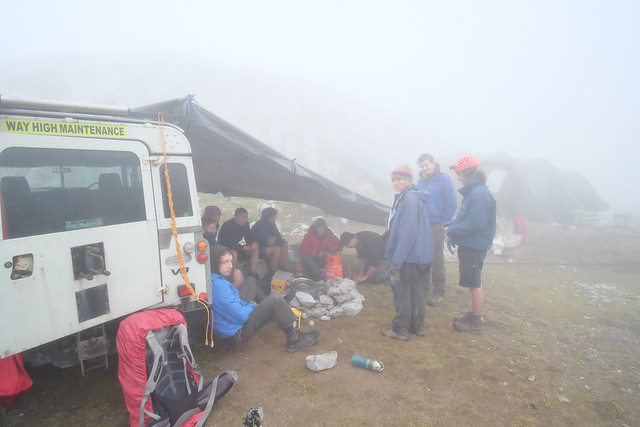 DSCF1958
DSCF1958 by
tommypmoore, on Flickr
On the caving, I can only write about those I?ve been down. One of the first objectives to assess T207 (Boulder Pot), was quickly eradicated as a potential lead, as the bottom would have required around a week of capping to get anywhere.
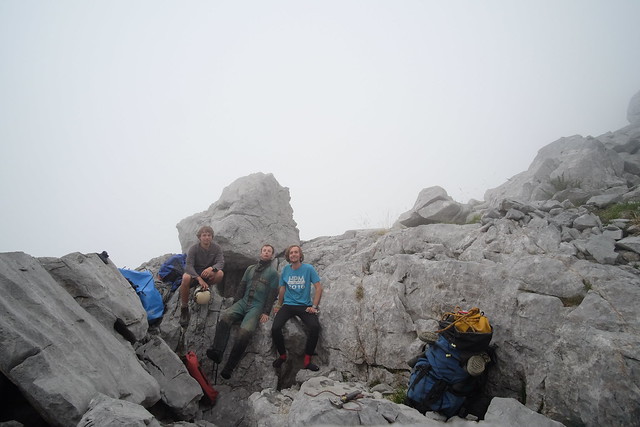 DSCF1923
DSCF1923 by
tommypmoore, on Flickr
Some team members have been working their way through the task of checking mine entrance GPS locations and exploring these complex workings ? the area is riddled with them, the roads through Tresviso were built by the mining companies!
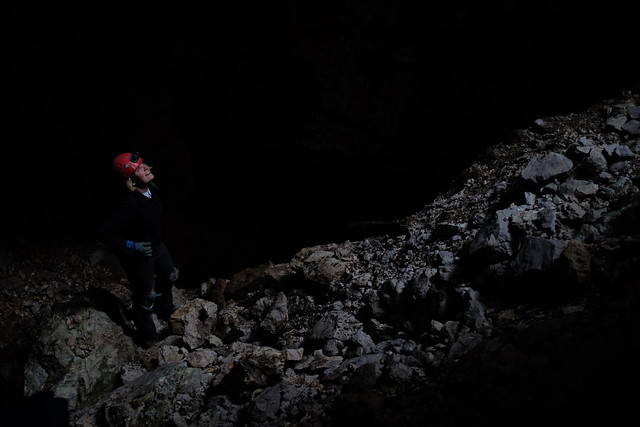 DSCF1943
DSCF1943 by
tommypmoore, on Flickr
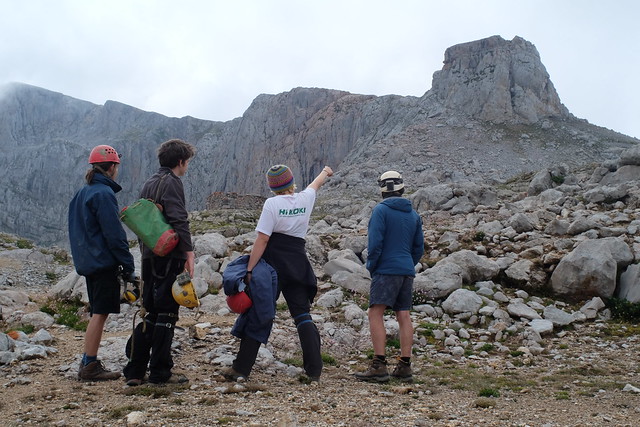 DSCF1935
DSCF1935 by
tommypmoore, on Flickr
Armed with oodles of metalwork, and rope by the sack-load (thanks UKC!), we have been able to work in multiple groups in different areas each day, taking advantage of the large team of ~25 (depending who was up or down the hill with the main Tresviso expedition).
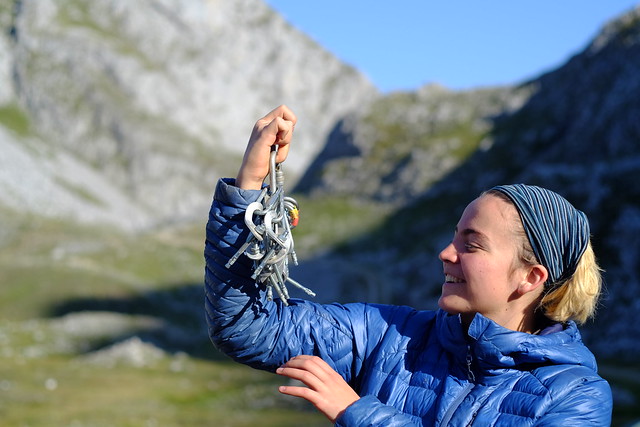 DSCF1975
DSCF1975 by
tommypmoore, on Flickr
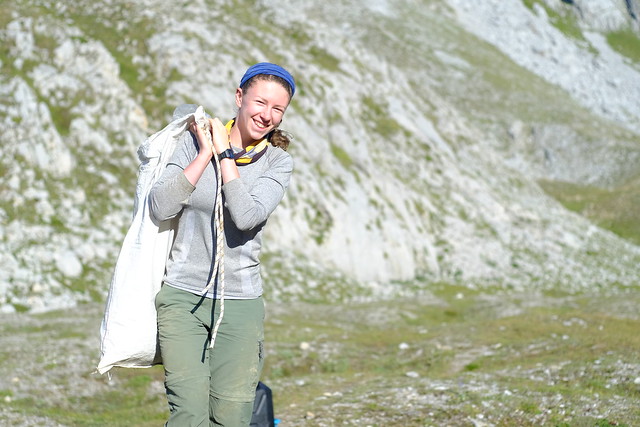 DSCF1986
DSCF1986 by
tommypmoore, on Flickr
While the stores have had plentiful equipment, there was ?the great hanger shortage of 2018? due to a set of 50 hangers and maillons not being packed, 1 drill was dropped down a pitch, another burnt out, these drills became one with some jiggery-pokery. Oh, and the SUSS Disto went in a puddle and became unreliable. Despite these hurdles, we have had great success with one of the leads?
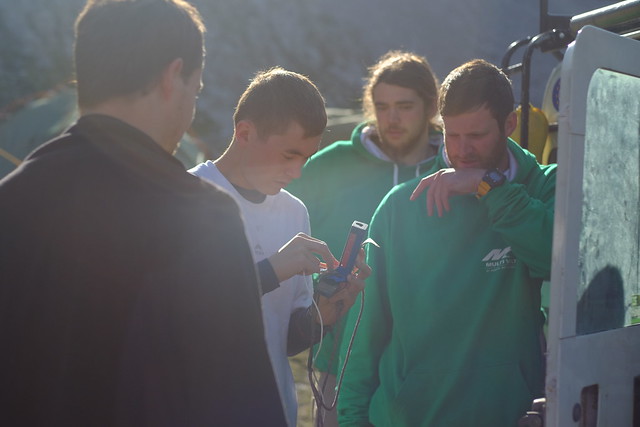 DSCF1984
DSCF1984 by
tommypmoore, on Flickr
The primary cave for the SUSS secondment of the 2018 Tresviso expedition is known as Flowerpot, or for the more data-point-inclined, T169.
The two routes diverge at the first chamber, allowing teams to push leads in both the Bill Series and the Ben Series. The Ben Series has been pushed by the LUSS of the 70's to a depth of some 700-odd metres where it hits a sump, SUSS has been ticking off various high-level leads in there, unfortunately with no alternative way on found as yet. Teams have been working hard at bolt climbing and having a good time by the sounds of things.
The initial rigging was led by Jack Dewison with a team consisting of Jreg (Michael Woodward), Molly Smith, and Jake Sturgeon, however, they went down the wrong series. After some time exploring the Ben Series, Bill was rigged to the bottom and the reigns handed over to new teams to assess the leads and potential. Rachael Rix and Jolene set off up a short bolt climb above the final pitch to a large ledge with an apparent passage leading off around the corner, there was no evidence of this being explored previously, though unfortunately it was fruitless in terms of a way on, but every new metre counts on the survey.
Myself, Conor McGurk, and Craig ?Creg? Hamer went down to the bottom chamber of Bill, to assess the ?too tight rift? that takes the water from the rest of the cave. This rift had previously been pushed some way but not to its full conclusion, after some capping, a tight an acrobatic pitch head yielded 8m drop into a mineral solution rift, with what look like iron flakes, quartz, and all manner of curiosities. Unfortunately this became truly too tight, and the lead was aborted.
However, just as we turned around to head out, happy to have closed off a lead, Conor asked if we?d spotted the squeeze high in the rift. It turns out that sitting around getting cold and looking intently at the passage walls pays off ? who knew?! After some gentle modification, we were through the squeeze and into a leaning rift feature, right at the top in the widest section. It just kept going, so we kept going, dragged along by a crisp, clean, draught we past numerous stals until it looked like our path was blocked by a portcullis of tusks, but this was easily bypassed by moving lower into the rift, as if the cave were made for our exploration. We were through the ?Ivory Market?.
We reached a more spanning traverse above a hole in the floor, we could hear water, and rock drops suggested around 30m, I stuck a short traverse line in, deviated to a rusty drill bit in found my tackle bag and set off down the rift to assess the best tactic. What appeared to be a false floor was a solid bedding to conveniently descending onto, before locating a wide enough window in the rift next to a thick stalagmite, resulting in a lovely clean take-off to a 30m freehang, the Elephant?s Trunk. We left the rigging until the following day.
Once descended, things did not look as promising, we were not in the walking streamway we had apprehensively been dreaming of, we met the water lost only a short while ago, and watched it descend further into another too tight rift. Conor was surveying in the Ben Thompson and Brendan Hall, so we were only two on this trip. Much to my delight, and Creg?s horror, this rift was breached by an arrow-straight, popcorn-covered body sized tube, some 20m in length. The tube contains bat leavings (at -180m), and is a bit of a pain to shove bags through due to the rift in the floor and sharp rock. Coming out of the other side of this by myself is an experience I won?t forget. The familiar sharp spiky rifty nature returns here, with one or two protracted routes to climb through, leading to a yawning pitch head some 5-8m in diameter, a clean tube of much better-quality rock, unlike much of what we had descended though so far. I struggled to find a rock to throw down, but snapping off a handhold allowed a 5 second drop to be measured.
Starting to feel worn out from the repeated trips, the others had a rest day (it was Sunday!), so Jack and Molly joined to find out what was at the bottom. Armed with an 87m rope and a handful of bolts I rigged two short access pitches to reach a convenient traversing ledge, from here I could now aim my light down the pitch unlike yesterday, the bright Scurion spot could only tickle the water at the bottom. Rigging this was exhilarating, with only three bolts remaining and the fact that it looked like a rebelay would be required I set off on a single hang with (shameless sponsor plugs incoming) UKC donated Patron rope, which handled excellently and packed down into a nice small sack.
It just kept going, and going, and still free, and going, by now I was wishing I had an umbrella as there was now way to stay out of the moderate drizzle from the pitch head that seemed to now span the whole pitch. *Ziiip-Thump* as the knot hit the back of my hand ? the rope was 4 metres too short! Terrified at how close the knot was to the end of the rope I made a quick vow to always tie my own knots before screaming a couple of expletives caused by the frustration of not being able to reach the way on ? the water is visible descending into another slot.
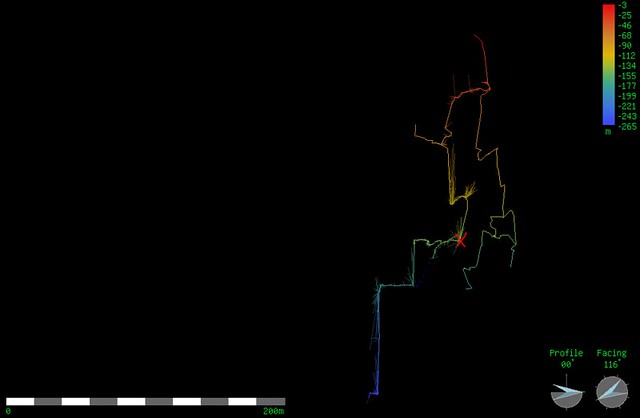 Flowerpot
Flowerpot by
tommypmoore, on Flickr
Red marks the previous limit of exploration, blue shows the route the water now takes.
Jack took over and rerigged as I was done for the day, ascending ?Invasive Species? had taken it out of me, and the poor (shameless plug) Hikoki Multivolt system drill was sodden. While Jack rerigged I tried to get a Disto Splay down the pitch, but with more ?Info 255? errors than I could handle, I gave up. The longest was ~50m, which tallied with the rock drop, but Jack said he could see the Disto hitting a slightly sloping wall and not the true bottom while he was hardcore crimping whilst drilling in a deviation (someone get that man a skyhook!).
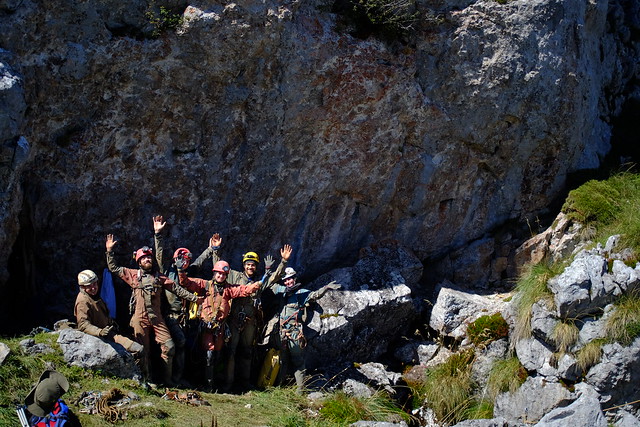 DSCF2038
DSCF2038 by
tommypmoore, on Flickr
The final pushing team went down to check the end and finish the survey while I had a day off to follow a misguided dream of being a wildlife and/or landscape photographer, the way on drops into a small pool chamber, which Jack dubbed ?Water-Way to Spend Sunday?, with a rift becoming too tight to progress further, at least on this expedition. There is potential for leads to be examined over the top of the 30m and 70m pitches (as we now know after the survey team returned armed with data), but these will have to wait until next year, as tomorrow the derig and photography begins.
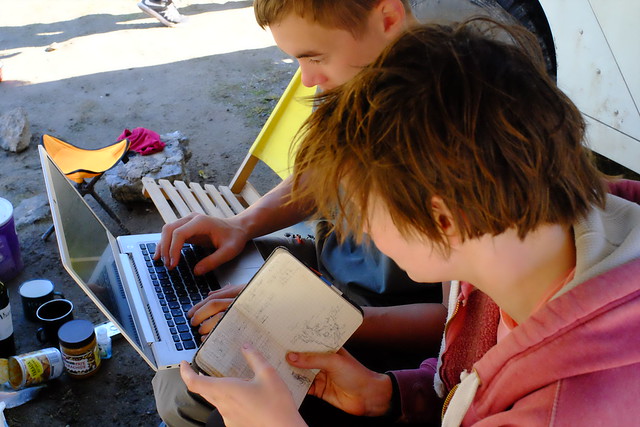 DSCF2004
DSCF2004 by
tommypmoore, on Flickr
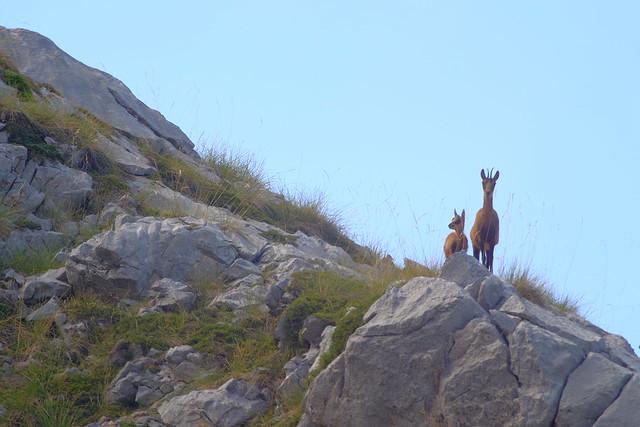 DSCF2104
DSCF2104 by
tommypmoore, on Flickr
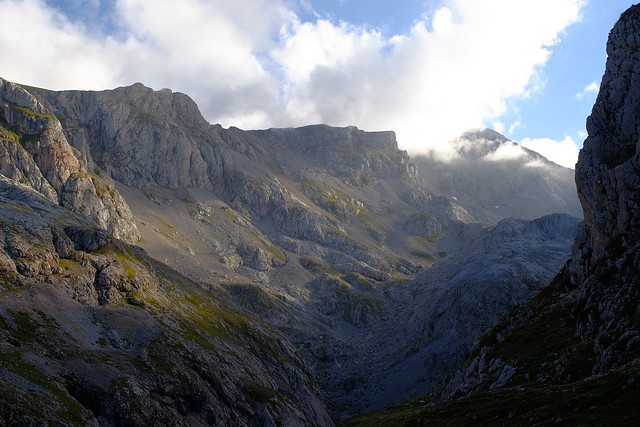 DSCF2156
DSCF2156 by
tommypmoore, on Flickr
I think we all owe Conor, one our newest members, a beer or five for his spotting of this very fruitful lead.
Photos and full surveys to come?
Tommy






















